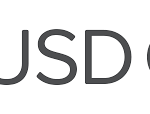Introduction
Passive investing, often associated with index funds and exchange-traded funds (ETFs), has gained significant popularity in recent years. In this article we explore the phenomenon of passive investing .In this piece, we analyze the characteristics of passive investing, challenges popular misconceptions, and share insights on its potential future.
The Argument for Passive Investing
In the article we showcases the definitive features that have contributed to the growth of passive investing. We assert that passive investment strategies tend to have lower fees compared to actively managed funds, which can be a significant advantage for long-term investors. Furthermore, passive funds provide broad market exposure and minimize the risk associated with individual stock selection.
Comparing Alternatives: Passive vs. Active
We included a comprehensive table to compare passive investing with active investing alternatives. The table includes various aspects such as fee structure, management style, turnover rate, and historical performance. This comparison helps readers understand the distinct characteristics of each investment approach and make informed decisions based on their investment objectives and risk tolerance.
| Passive Investing | Active Investing | |
|---|---|---|
| Fee Structure | Generally lower due to reduced trading costs | Can be higher due to active management fees |
| Management Style | Replicates a market index | Actively selects and manages individual securities |
| Turnover Rate | Low turnover as it aims to track the index | Higher turnover due to frequent portfolio adjustments |
| Historical Performance | Can outperform active management over the long term | Varies depending on the skill of the active manager |
Addressing Common FAQs
1. Are passive funds suitable for all types of investors?
Passive funds are often considered suitable for long-term, buy-and-hold investors who seek broad market exposure while keeping costs low. However, it is essential to evaluate individual circumstances and consult with a financial advisor to determine the most appropriate investment strategy.
2. Can passive investment strategies provide superior returns?
While passive strategies cannot guarantee superior returns, they have demonstrated the ability to outperform actively managed funds over the long term due to their low costs and broad market exposure. However, market conditions can impact performance, and it is crucial to consider one’s investment goals and risk tolerance.
3. How has the rise of passive investing affected the active management industry?
The rise of passive investing has caused a significant shift in the investment landscape. Active managers are facing increased scrutiny and pressure to justify their fees and consistently outperform their benchmarks. This has led to the closure of underperforming active funds and fee reductions among active managers.
Conclusion
This article provides a comprehensive analysis of the rise of passive investing. It highlights the advantages of passive strategies, including lower fees, broad market exposure, and potential long-term outperformance. However it is important to acknowledge that active management still has a role to play for investors seeking more specialized approaches. In the end, the choice between passive and active investing ultimately depends on individual preferences, risk appetite, and financial goals.







